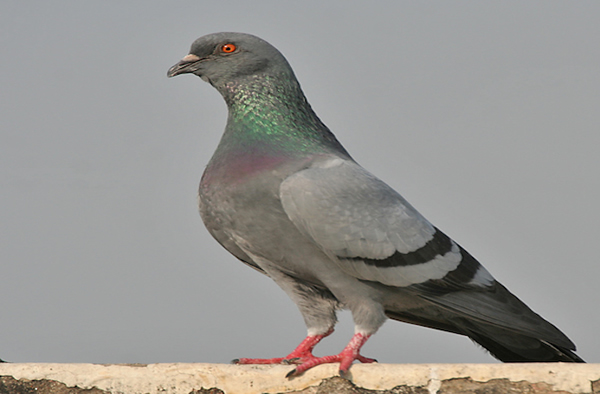Most Pigeons Came From Escaped Racing Birds
Most Pigeons Came From Escaped Racing Birds
Much of the world’s pigeon population descends from escaped racing birds from the Middle East, confirms one of the most extensive DNA studies on the now ubiquitous bird.
The study, published in the journal Science, decoded the genetic blueprint of the rock pigeon — the bird that most of us refer to as just plain old “pigeon.”
“Birds are a huge part of life on Earth, and we know surprisingly little about their genetics,” especially compared with mammals and fish, Michael Shapiro, one of the study’s two principal authors and an assistant professor of biology at the University of Utah, said in a press release. “There are more than 10,000 species of birds, yet we know very little about what makes them so diverse genetically and developmentally.”
He added that in the new study, “we’ve shown a way forward to find the genetic basis of traits — the molecular mechanisms controlling animal diversity in pigeons. Using this approach, we expect to be able to do this for other traits in pigeons, and it can be applied to other birds and many other animals as well.”
Pigeons are the world’s oldest domesticated birds, with a history with humans that goes back at least 5,000 years. We tend to associate them with urban sprawl, poop and other less desirable things, but the birds are highly intelligent and were prized as homing pigeons, and for their beauty.
According to the researchers, these are the key findings of the new study:
* There are some 350 breeds with different sizes, shapes, colors, color patterns, beaks, bone structure, vocalizations and arrangements of feathers on the feet and head.
* The pigeon is among the few bird genomes sequenced so far, along with those of the chicken, turkey, zebra finch and a common parakeet and “this will give us new insights into bird evolution,” Shapiro said.
* Using software developed by study co-author Mark Yandell, a University of Utah professor of human genetics, the scientists revealed that a single mutation in a gene named EphB2 causes head and neck feathers to grow upward instead of downward, creating head crests. “This same gene in humans has been implicated as a contributor to Alzheimer’s disease as well as prostate cancer and possibly other cancers,” Shapiro said.
* A comparison of the pigeon genome to those of chickens, turkeys and zebra finches found that “despite 100 million years of evolution since these bird species diverged, their genomes are very similar,” Shapiro said.
* The study turned up more conclusive evidence that major pigeon breed groups originated in the Middle East, and that North American feral pigeons — which are free-living but not wild — are close relatives of racing pigeons, named racing homers.
* The study assembled 1.1 billion base pairs of DNA in the rock pigeon genome, and the researchers believe there are about 1.3 billion total, compared with 3 billion in the human genome. The rock pigeon’s 17,300 genes compare with about 21,000 genes in people.
The study also found that some pigeon breeds originated in India. During Fertile Crescent times, people from areas such as India were trading goods and probably also interbreeding their pigeons.
Shapiro noted Charles Darwin paid a lot of attention to pigeons: “Now we can get to the DNA-level changes that are responsible for some of the diversity that intrigued Darwin 150 years ago.”
Jan 31, 2013 02:04 PM ET by Jennifer Viegas












